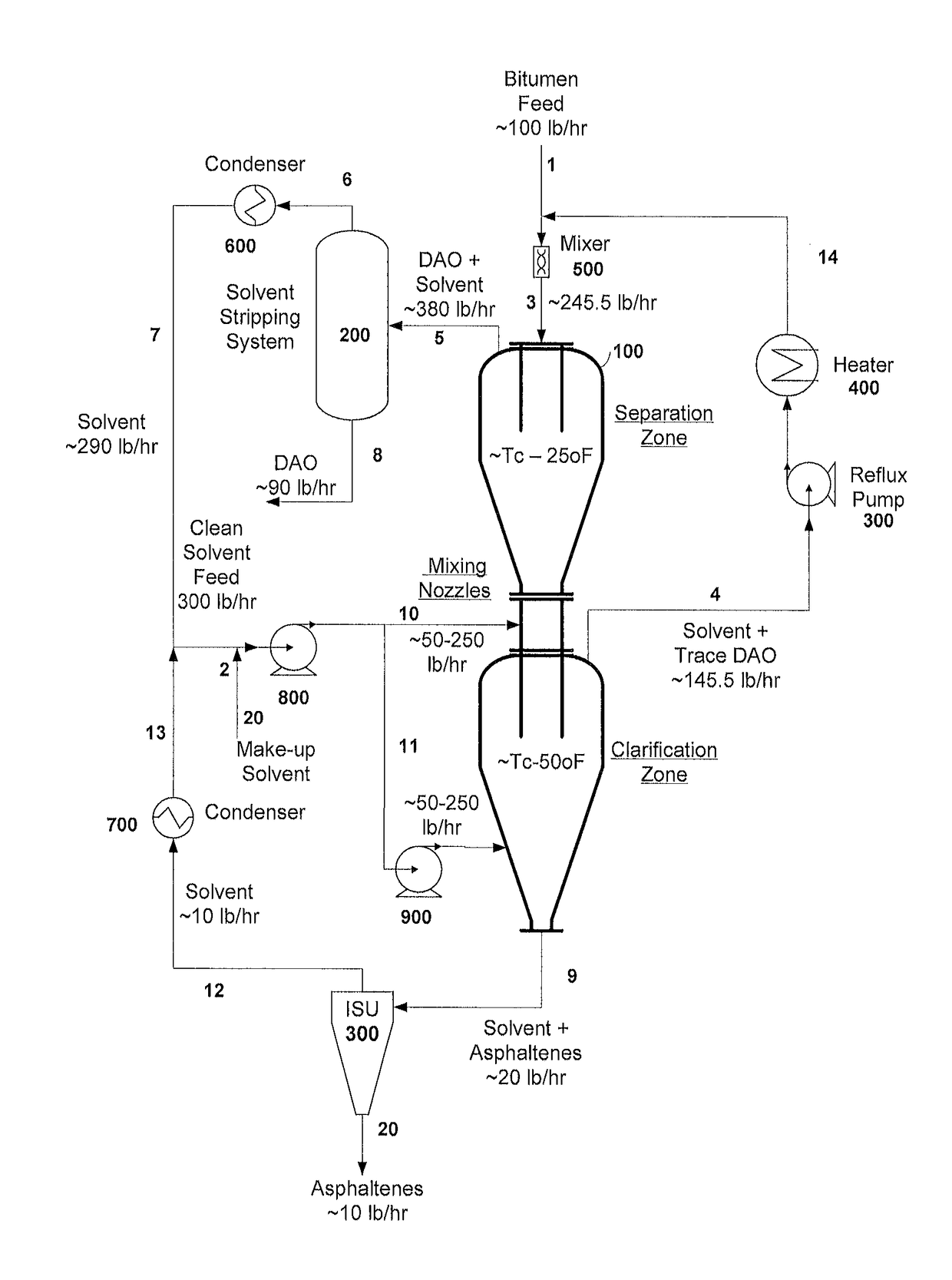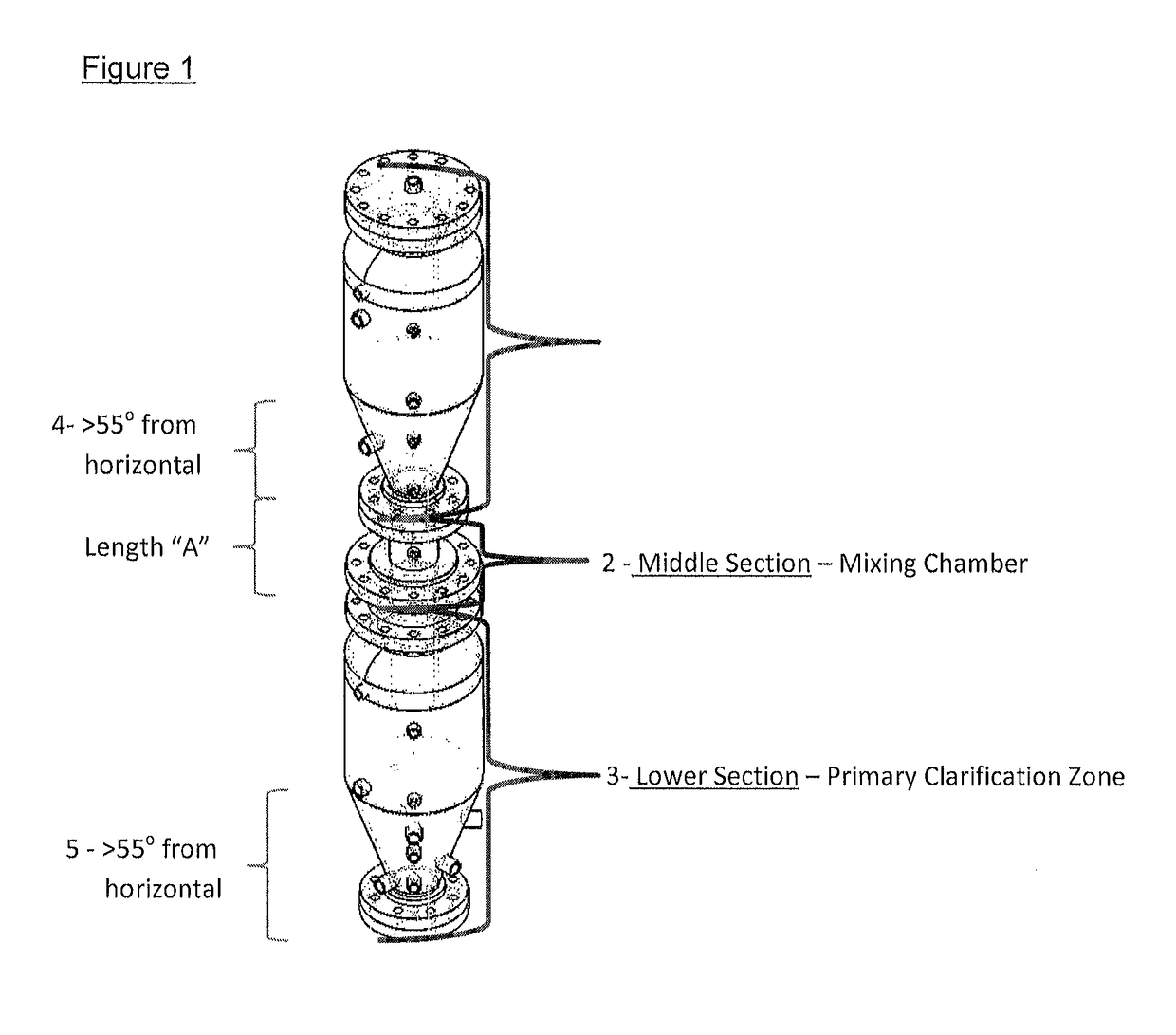Separation of solid asphaltenes from heavy liquid hydrocarbons using novel apparatus and process (“IAS”)
a technology of heavy liquid hydrocarbons and separators, which is applied in the direction of solvent extraction, hydrocarbon oil refining control/regulation, solvent de-asphalting, etc., can solve the problems of inability to arrange, process also has a high solvent volume requirement at industrial scale, and cannot meet the requirements of patents, etc., to reduce the overall solvent-to-oil ratio requirements, reduce the settling and plugging, and achieve high dao recovery and yield economic
- Summary
- Abstract
- Description
- Claims
- Application Information
AI Technical Summary
Benefits of technology
Problems solved by technology
Method used
Image
Examples
Embodiment Construction
[0023]The detailed description set forth below in connection with the appended drawings is intended as a description of various embodiments of the present invention and is not intended to represent the only embodiments contemplated by the inventors. The detailed description includes specific details for the purpose of providing a comprehensive understanding of the present invention. However, it will be apparent to those skilled in the art that the present invention may be practiced without these specific details.
[0024]Known methods of countercurrent liquid-liquid extraction of mixtures are generally of two types. The first type is designated as the batch countercurrent multiple contact method and employs a multiple of one-stage steps. It requires an apparatus consisting of a multiple of separate, external and alternate mixing and settling units connected by pipes and pumps to circulate the liquids. A pair of mixing and settling steps is known as a “stage” with solvent and separated ...
PUM
| Property | Measurement | Unit |
|---|---|---|
| temperature | aaaaa | aaaaa |
| operating temperature | aaaaa | aaaaa |
| operating temperatures | aaaaa | aaaaa |
Abstract
Description
Claims
Application Information
 Login to View More
Login to View More - R&D
- Intellectual Property
- Life Sciences
- Materials
- Tech Scout
- Unparalleled Data Quality
- Higher Quality Content
- 60% Fewer Hallucinations
Browse by: Latest US Patents, China's latest patents, Technical Efficacy Thesaurus, Application Domain, Technology Topic, Popular Technical Reports.
© 2025 PatSnap. All rights reserved.Legal|Privacy policy|Modern Slavery Act Transparency Statement|Sitemap|About US| Contact US: help@patsnap.com



